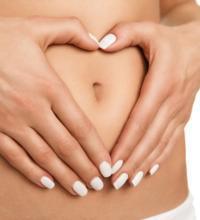How to Stop Throbbing Pain After a Root Canal?

Dr. Anton Moskalenko is a Dentist practicing in Brooklyn, New York. Dr. Moskalenko specializes in preventing, diagnosing, and treating diseases and conditions associated with the mouth and overall dental health. Dentists are trained to carry out such treatment as professional cleaning, restorative, prosthodontic, and... more
Root canal treatment is designed to relieve pain caused by infection or damage within a tooth, yet some patients may experience throbbing pain after the procedure. While it’s normal to feel some discomfort in the days following a root canal, lingering throbbing pain can be concerning. Understanding how to manage this pain and knowing when to seek help are key to ensuring a smooth recovery. This article will guide you through the common causes of post-root canal pain, ways to alleviate it, and steps to take if the pain persists.
For expert care and comprehensive follow-up after your root canal, consider visiting ParkSide Dental, a leading dental clinic in Brooklyn, NY, where Dr. Anton Moskalenko, DDS, and his team are dedicated to ensuring patient comfort and a successful recovery.
Why Does Throbbing Pain Occur After a Root Canal?
While a root canal eliminates infection and removes damaged tissue from within the tooth, it can still leave the surrounding tissues irritated and inflamed. This is typically why you may feel some discomfort or throbbing pain after the procedure. In most cases, this discomfort is temporary and can be managed with simple remedies. However, if the pain persists or worsens, it could indicate an underlying issue that requires professional attention.
Common Causes of Throbbing Pain Post-Root Canal
- Inflammation of Surrounding Tissue: The area around the treated tooth can become inflamed due to the trauma of the procedure. This inflammation can result in throbbing pain, particularly in the first few days after treatment.
- Pressure on the Tooth: The treated tooth may be temporarily more sensitive to pressure or biting, which can trigger throbbing pain when you chew or put pressure on it.
- Incomplete Healing: In some cases, if the infection wasn't completely cleared or if there’s another issue with the tooth's structure, pain may persist after the root canal.
- Irritated Nerves: While the nerve inside the tooth is removed during the root canal, nerves in the surrounding tissues may become irritated and cause pain. This discomfort typically decreases as the tissue heals.
- Temporary Filling or Crown Issues: If the temporary filling or crown placed after your root canal is too high, it can cause your bite to be misaligned, leading to pain and discomfort.
How to Stop Throbbing Pain After a Root Canal
Here are some effective ways to manage and reduce throbbing pain after a root canal:
1. Over-the-Counter Pain Relief
Non-prescription pain relievers such as ibuprofen (Advil, Motrin) or acetaminophen (Tylenol) can be highly effective in managing pain after a root canal. These medications help reduce inflammation and alleviate discomfort. Be sure to follow the dosage instructions provided by your dentist or pharmacist.
- Ibuprofen is particularly useful because it has anti-inflammatory properties, which can help reduce swelling around the treated area.
- Acetaminophen is a good option if you are sensitive to anti-inflammatory medications or if your dentist advises against them.
2. Cold Compress
Applying a cold compress to the outside of your cheek near the treated tooth can help reduce inflammation and numb the area, providing temporary relief from throbbing pain. Wrap a cold pack or ice in a cloth and apply it for 15 to 20 minutes at a time, with breaks in between.
3. Saltwater Rinse
A warm saltwater rinse can help soothe irritated tissue and reduce swelling. To make a saltwater rinse:
- Mix one teaspoon of salt in a glass of warm water.
- Swish the solution around your mouth for 30 seconds before spitting it out.
- Repeat this process 2-3 times a day for the first few days after your root canal.
This simple home remedy can help keep the treated area clean and promote healing, while also easing discomfort.
4. Avoid Hard or Chewy Foods
Your tooth will be sensitive for a few days after the root canal, and chewing on hard or sticky foods can aggravate the area, causing more pain. Stick to soft foods such as yogurt, mashed potatoes, and smoothies until the sensitivity subsides.
- Chewing on the opposite side of the mouth can also help reduce pressure on the treated tooth.
- Avoid foods that are too hot or too cold, as extreme temperatures can increase sensitivity.
5. Elevate Your Head While Sleeping
Keeping your head elevated while sleeping can help reduce throbbing pain by minimizing blood flow to the treated area. Propping yourself up with an extra pillow can prevent blood from pooling around the affected tooth, which can reduce pressure and discomfort.
6. Maintain Good Oral Hygiene
Proper oral hygiene is critical to prevent infections and ensure a smooth recovery after a root canal. Gently brushing and flossing around the treated area can keep it clean, but avoid putting too much pressure on the tooth. Your dentist may also recommend using an antibacterial mouthwash to prevent bacteria from building up around the treated area.
7. Take Prescribed Medications
In some cases, your dentist may prescribe antibiotics or stronger pain relievers if they believe there’s a risk of infection or if over-the-counter medications aren’t providing enough relief. Be sure to take these medications exactly as prescribed to promote healing and manage pain.
When to Contact Your Dentist
While mild throbbing pain after a root canal is normal, there are some signs that may indicate complications, which should be addressed by your dentist:
- Severe or worsening pain: If your pain increases over time or becomes unbearable, it may be a sign that there is an issue with the root canal or the surrounding tissues.
- Swelling or pus: Any signs of infection, such as swelling around the tooth or discharge of pus, should be treated immediately to prevent further complications.
- Fever: A fever could indicate a lingering infection that requires attention.
- Persistent sensitivity: If your tooth remains extremely sensitive to temperature or pressure after several days, it’s a good idea to contact your dentist.
At ParkSide Dental Brooklyn, Dr. Anton Moskalenko and his team are available to help manage any post-root canal complications and ensure you receive the care you need. They are committed to providing excellent follow-up care and addressing any concerns you may have after your procedure.
Tips for a Smooth Recovery
- Follow Your Dentist’s Instructions: Your dentist will provide specific post-treatment care instructions. Be sure to follow them closely to promote healing and reduce the risk of complications.
- Stay Hydrated: Drinking plenty of water helps flush toxins from your body and aids in the healing process. Just avoid using straws to prevent disturbing the treated area.
- Attend Follow-Up Appointments: It's essential to attend any scheduled follow-up visits to ensure your root canal is healing correctly. During these visits, your dentist will check for any issues and ensure that your tooth is properly restored with a permanent filling or crown.
- Be Patient: Some discomfort after a root canal is normal, and it may take several days for the pain to subside completely. Be patient with your recovery, and avoid rushing back to your regular activities too soon.
Conclusion
Throbbing pain after a root canal can be managed with over-the-counter medications, home remedies, and careful attention to your diet and activities. Most discomfort subsides within a few days, but if your pain persists or worsens, it’s essential to seek professional help to rule out any complications.
For comprehensive care and expert root canal treatments in Brooklyn, NY, visit ParkSide Dental. Dr. Anton Moskalenko and his team are dedicated to ensuring a smooth recovery, providing follow-up care, and addressing any concerns you may have throughout the healing process.









